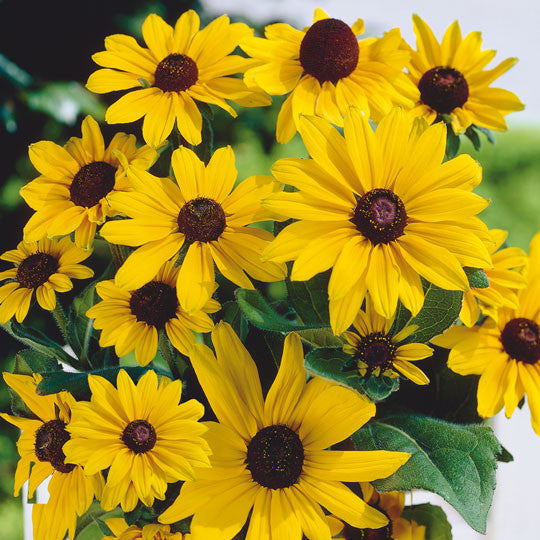CHARACTERISTICS
Attracts Butterflies – Border planting - Container planting – Cut Flower – Deer Resistant – Dried Flower usage – Rabbit Resistant - Mass planting
Rudbeckia Black Eyed Susan
Helianthus Loddon Gold, is an easy to grow perennial with large flower heads of golden yellow and black to brown centers. ‘Black-Eyed Susan’ needs to be grown in full sun or semi-shade in somewhat moist soil conditions in a well-drained area. It is great in borders, for cut flowers or for naturalized areas. Rudbeckia attracts butterflies, provides food for birds in the winter and is mildew-resistant.
- Planting Location: Full sun or partial shade
- Planting: February-May after Frost
- Planting Depth: 1 inch (2,5 cm)
- Planting Distance: 16 inch (40 cm)
- Flowers In: June-August
- Flowering Height: Approx. 24 inch (60 cm)
How to Grow
Easy to Grow:
1. Select an area with full sun or semi-shade
2. Dig a hole 1 inch (2,5 cm) deep
3. Place the perennial in the hole, with pointed side up
4. Space perennials 16 inches (40 cm) apart
5. Cover with soil and water thoroughly
Planting Tips:
Plant in groups of 2 or more, in well-drained soil. Perennial will benefit from a handful of compost added to the planting holes. Removing faded flowers regularly will greatly increase the blooming time. Plants can be easily divided in the fall or early spring of next season. Until planting it's best to store product between 35 F and 60 F degrees.

Search code: TG928


